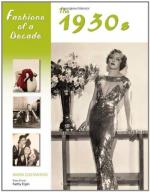|
This section contains 247 words (approx. 1 page at 300 words per page) |

|
Ihe consumer movement, long a minor fixture in American economic life, became increasingly important during the 1930s. One catalyst was the Depression, which convinced many consumers that businesses were practicing price gouging and other forms of consumer fraud. Another stimulus was the books of writer Fred J. Schlink, whose 1927 study, Your Money's Worth, and 1933 sequel with Arthur Kallet, 100,000,000 Guinea Pigs, exposed a host of fraudulent practices and merchandiser chicaneries. In the early 1930s the Federal Radio Commission also turned up glaring examples of medical fraud by radio advertisers. Consumer cooperatives were also instrumental in the rise of consumerism. Various groceries, meat markets, pharmacies, gas stations, and medical clinics were run cooperatively, meaning that members of the co-op contributed cash or labor toward the maintenance of the co-op. The co-op in turn cut out middlemen as much as possible and brought goods to the consumer for...
|
This section contains 247 words (approx. 1 page at 300 words per page) |

|




